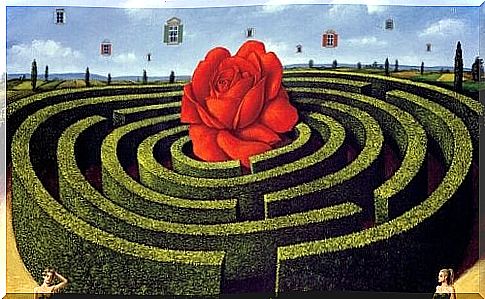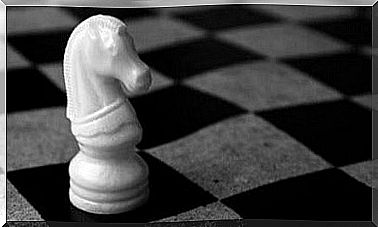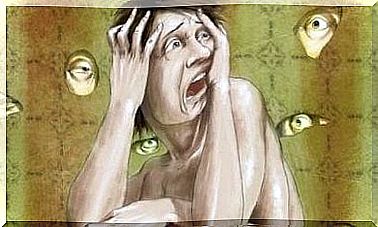Personal Space And Stress: Invading Intimacy

Personal space is a private, intimate and exclusive territory that no one can invade or make their own. It does not only refer to the physical component, it also concerns the invasion by other stimuli, such as noise, the emotions that other people transmit to us, an excessive load of information or the constant interruptions in our moments of solitude or intimacy.
We often say that there are people who move around the world like pachyderms, like big elephants that invade the spaces of others, trampling rights and violating privacy. This effect usually occurs in our work contexts, undoubtedly affecting our productivity and in turn causing a high level of stress and discomfort.
We cannot leave out an important aspect. Personal space does not refer only to the precise centimeters that each one tolerates with respect to the physical presence of others; where the voice, the breath, the body heat of others annoy us and are even a threat. Personal space is also a bubble that can burst in the face of any type of psychosensory stimulation.
In other words, things like furniture, decoration, lack of lighting, or the smell of a particular environment can also be a source of stress. In turn, not being able to have intervals of time to dedicate to oneself, being constantly monitored or controlled are a clear invasion of one’s personal space.

Personal space and stress
Anna and Paolo have just become parents and feel overwhelmed . The stress they experience has nothing to do with their child, but with the context in which they live: family, friends and co-workers. Already in the hospital they saw their personal space continuously invaded by these people, close and enthusiastic, who with all the good intentions of the world took turns to see the newborn, pick him up and give a thousand advice to the parents.
This small example is a demonstration of how our context sometimes oversteps the boundaries of this personal bubble that we need to preserve for our well-being. It is not necessary to enter an elevator full of people to feel discomfort, often the most serious “attacks” come from the people closest to us. Hence the overriding need to know how to set limits.
This is a very common reality in psychological studies. Often psychologists are faced with people who have spent half their life feeling unable to protect their personal space. This inaction or inability to manage their personal boundaries generates a very high emotional cost, leaves its mark and weakens the whole the deepest foundations of their psychological architecture.

Take care of yourself, protect your personal space
Ralph Adolph and Daniel P. Kennedy, neurologists at the California Institute of Technology (United States), have discovered that there is a structure in the brain that tells us where the limits of our personal space are located. This is the amygdala, that small region associated with fear or our survival instinct.
This discovery is undoubtedly interesting and reveals an essential fact: the brain measures the personal limits of each individual. It is like a personal alarm button that tells us that something or someone is bothering us, invading our intimacy or violating our integrity to the point of being threatening to our eyes. These limits vary in each person: there are those who only need a minimum to experience feelings of anguish and stress, while others, on the contrary, have a much higher degree of tolerance.
Proxemics, the science that studies the effects of our interactions in the use of space, reminds us that one of our greatest sources of anxiety is seeing that we are increasingly “crowded” in all senses. We not only have less physical space for everything, but we receive so many stimuli, pressures and interactions on all fronts that we hardly put filters. We let everything overwhelm us, catch us, surround us …

We need to know how to manage our personal limits. We must learn to establish physical and psychological distances in all the external dynamics that attack our intimacy and which materialize as powerful sources of stress. Sometimes it’s our co-workers, other times it’s overly noisy, colorful, tiny or oppressive.
On other occasions it is our clear inability to say “no”, to make it clear what we can tolerate and what we can’t. Being explicit in indicating where our personal boundaries are will help us to relate much better to others, because only in this way will we shape social contexts that are more respectful, productive and, above all, healthy.









